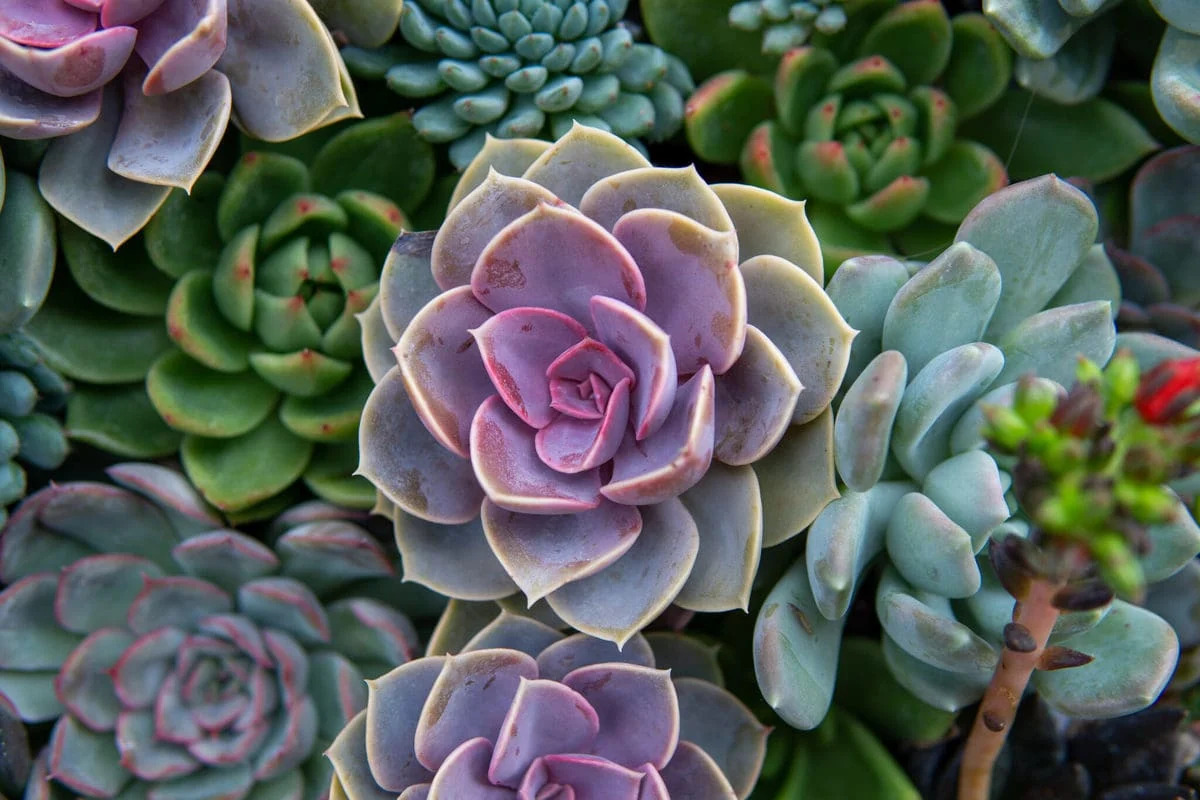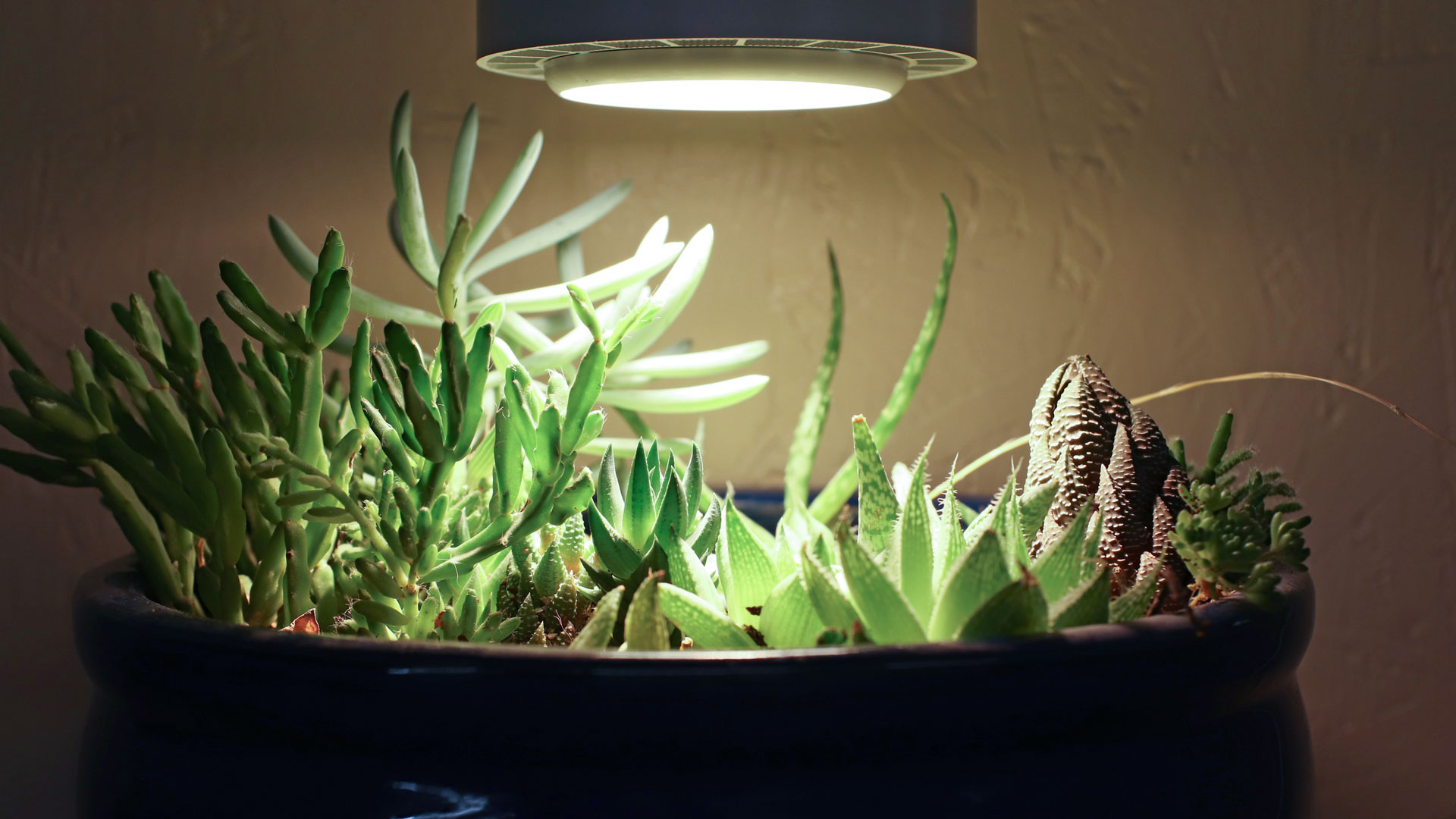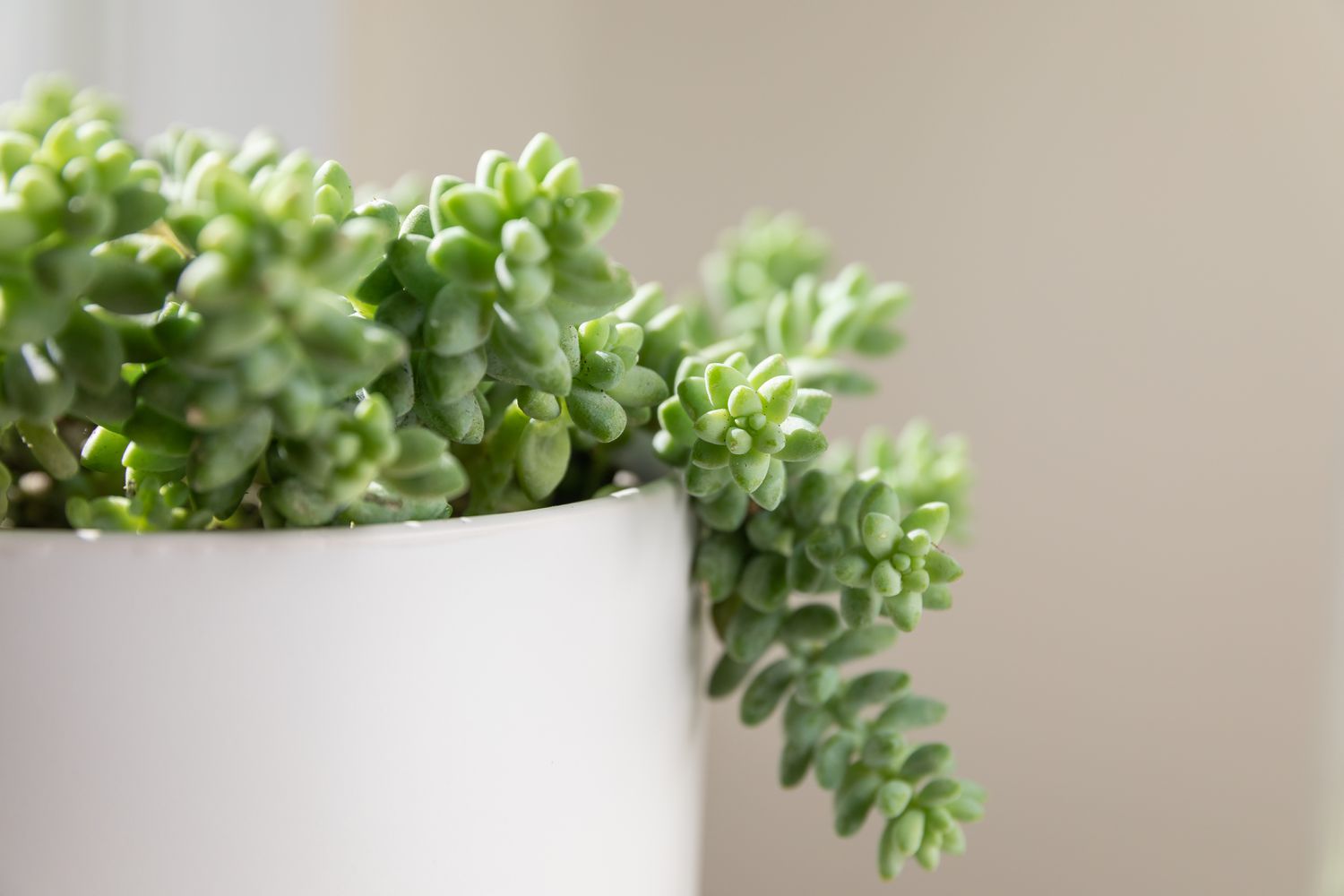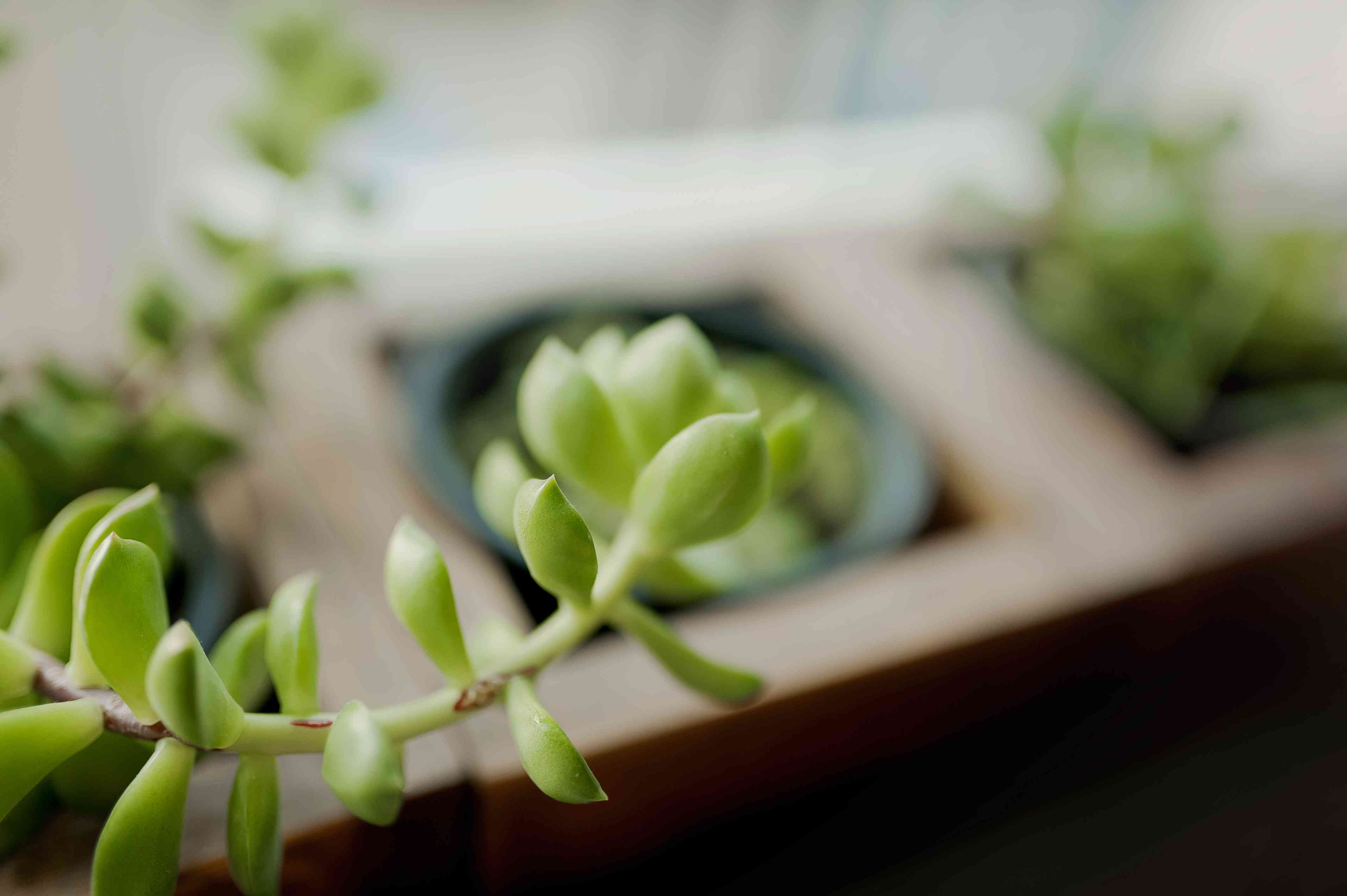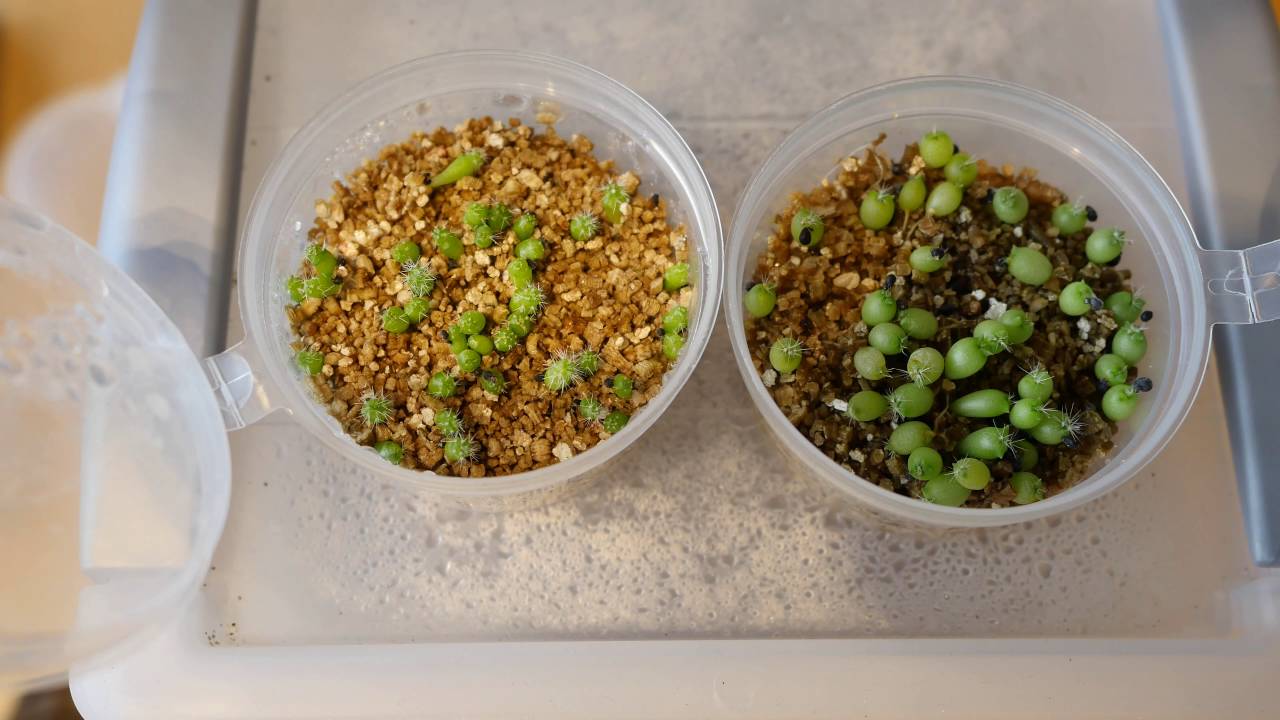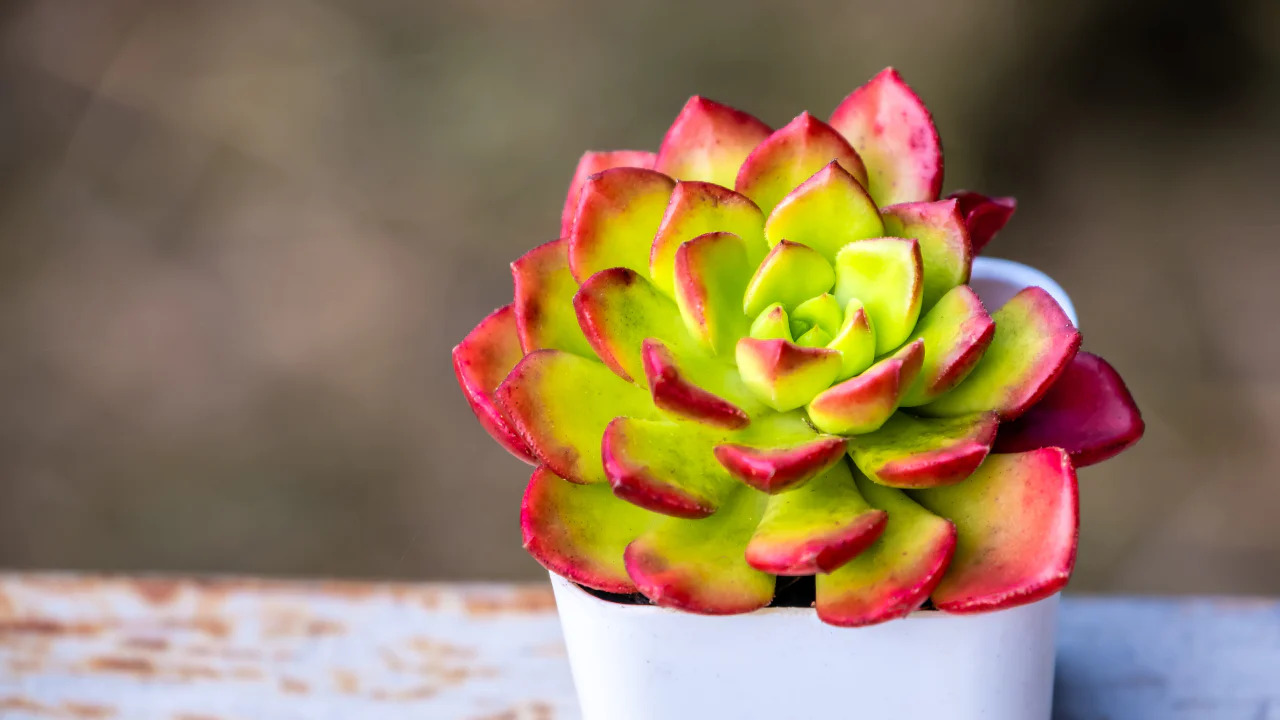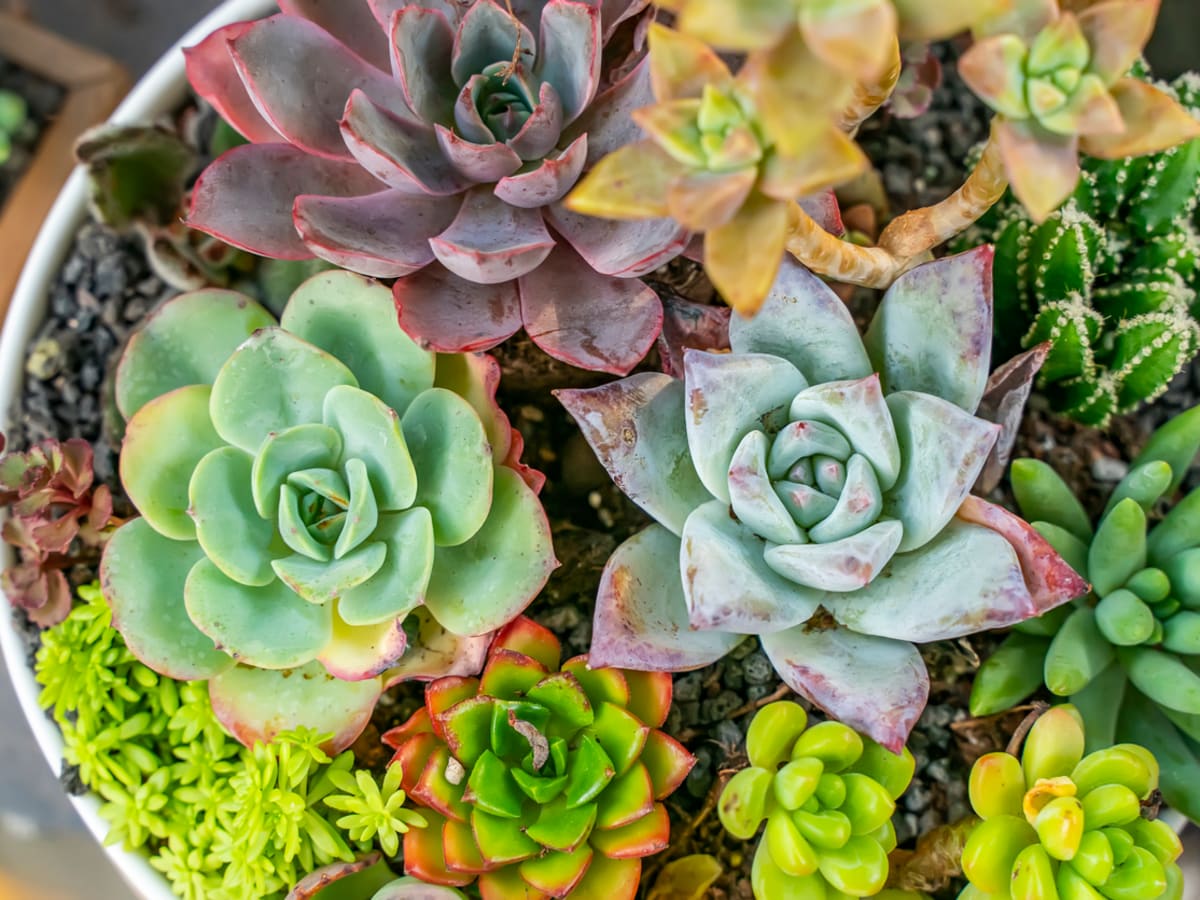Home>Types of Gardening>Ornamental Gardening>How To Grow Huge Succulents
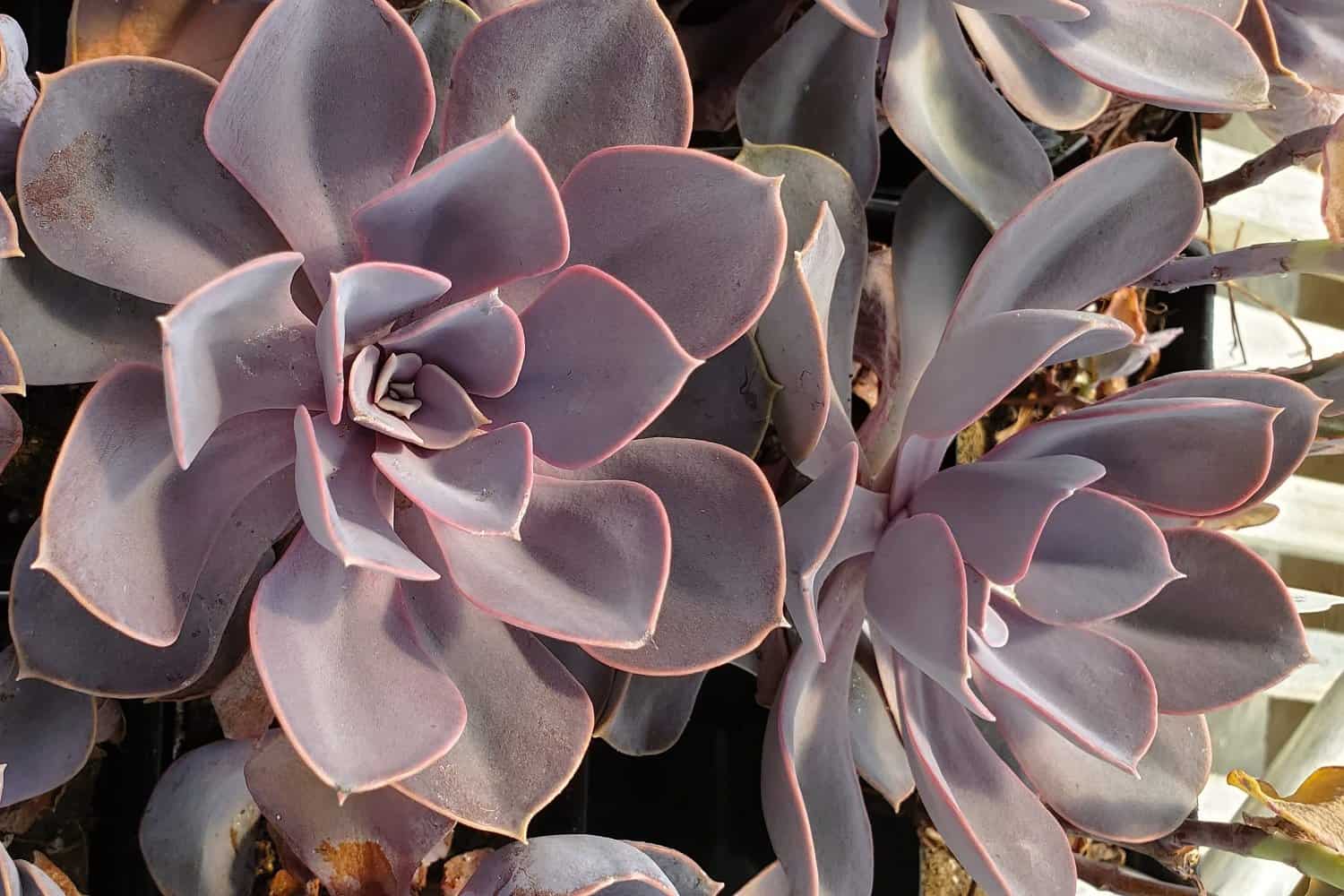

Ornamental Gardening
How To Grow Huge Succulents
Modified: January 22, 2024
Learn the best techniques for growing large and healthy succulents in your ornamental garden. Discover expert tips and tricks for impressive succulent growth.
(Many of the links in this article redirect to a specific reviewed product. Your purchase of these products through affiliate links helps to generate commission for Chicagolandgardening.com, at no extra cost. Learn more)
Table of Contents
**
Introduction
**
Welcome to the fascinating world of succulents, where the extraordinary diversity of these plants offers endless possibilities for ornamental gardening. Succulents, with their striking shapes, vibrant colors, and low-maintenance nature, have captured the hearts of gardening enthusiasts and interior decorators alike. Whether you are a seasoned gardener or just beginning your horticultural journey, growing huge succulents can be a rewarding and visually stunning experience.
Succulents are renowned for their ability to thrive in arid conditions by storing water in their fleshy leaves, stems, or roots. This unique adaptation not only makes them resilient in challenging environments but also allows them to be versatile ornamental plants in various settings. From the iconic rosettes of Echeveria to the architectural elegance of Aloe, the allure of these plants knows no bounds.
In this comprehensive guide, we will delve into the art of cultivating oversized succulents, exploring the key considerations and techniques that will help you achieve remarkable growth and visual impact. From selecting the right succulents and containers to mastering sunlight exposure, watering, fertilization, and propagation, we will uncover the secrets to nurturing thriving, colossal succulents that will elevate the aesthetic appeal of any space.
So, whether you aspire to create a captivating succulent garden, adorn your living space with stunning potted specimens, or simply expand your horticultural expertise, join us on this enlightening journey into the world of growing huge succulents. Embrace the beauty and allure of these remarkable plants as we unlock the art and science of cultivating oversized succulents that are sure to leave a lasting impression.
Let's embark on this captivating horticultural adventure and discover the joys of cultivating magnificent, larger-than-life succulents that will become the focal point of your ornamental garden or indoor oasis.
**
Choosing the Right Succulents
**
When embarking on the journey of growing huge succulents, the first crucial step is selecting the right species that have the potential to achieve impressive size while thriving in your specific growing conditions. With a vast array of succulent varieties available, each showcasing unique growth habits and aesthetic qualities, careful consideration is essential to ensure the successful cultivation of oversized specimens.
Factors to Consider:
- Growth Potential: Opt for succulent species known for their ability to attain substantial size, such as Aloe, Agave, certain Echeveria, and Sempervivum varieties. These plants are renowned for their robust growth and striking visual presence, making them ideal candidates for cultivating large succulents.
- Climate Suitability: Consider the climate in your region and choose succulents that are well-suited to the prevailing conditions. Some succulents thrive in arid, desert-like environments, while others prefer more temperate climates. By selecting species adapted to your local climate, you can provide an environment conducive to their optimal growth.
- Space Availability: Assess the space where you intend to grow your succulents. Some species, such as Agave and Yucca, require ample room to accommodate their impressive size, while others, like certain Aloe and Haworthia varieties, are more compact and suitable for smaller spaces.
Visual Appeal: Consider the aesthetic qualities of the succulents, including their color, texture, and growth form. Choose species that align with your ornamental preferences and harmonize with the overall design of your garden or living space. Whether you prefer the sculptural elegance of Agave or the intricate rosettes of Echeveria, selecting visually captivating succulents is key to creating a stunning ornamental display.
By thoughtfully considering these factors, you can identify the ideal succulents that possess the potential to grow into magnificent, oversized specimens, adding a captivating allure to your ornamental garden or indoor environment.
**
Selecting the Right Container
**
Choosing the appropriate containers for your succulents is a crucial aspect of their cultivation, impacting not only their visual presentation but also their overall health and growth. The right container provides adequate space for the succulents’ root systems, promotes proper drainage, and complements the aesthetic appeal of the plants. Whether you opt for traditional terra cotta pots, modern ceramic planters, or innovative hypertufa containers, the selection of the right vessel significantly contributes to the success of growing huge succulents.
Considerations for Container Selection:
- Size and Depth: Opt for containers that offer ample room for the succulents’ roots to spread and grow. While some species, such as Agave and Aloe, require deeper containers to accommodate their substantial root systems, others, like Sedum and Sempervivum, thrive in shallower pots. Assess the specific requirements of your chosen succulents and select containers that align with their growth habits.
- Drainage Holes: Ensure that the containers have sufficient drainage holes to prevent waterlogging, which can lead to root rot and other moisture-related issues. Proper drainage is essential for succulents, as it allows excess water to escape, promoting a healthy root environment and preventing the accumulation of stagnant moisture.
- Material and Aesthetics: Consider the material and visual appeal of the containers. Terra cotta pots, renowned for their breathability, are suitable for succulents that prefer drier soil conditions, while glazed ceramic and plastic containers offer diverse design options and moisture retention capabilities. Additionally, explore creative alternatives such as hypertufa troughs or wooden planters to add a unique touch to your succulent display.
Placement and Environment: Evaluate the placement of the containers and the environmental conditions of their intended location. If your succulents will be displayed outdoors, select containers that can withstand the elements and complement the outdoor landscape. For indoor settings, consider the aesthetic harmony between the containers and their surroundings, ensuring that they enhance the interior décor while providing an optimal growing environment for the succulents.
By carefully considering these factors and selecting containers that cater to the specific needs of your succulents, you can create a visually captivating and conducive environment for nurturing impressive, oversized specimens that will thrive and flourish in their chosen containers.
**
Providing Adequate Sunlight
**
Proper sunlight exposure is paramount for the healthy growth and development of succulents, playing a pivotal role in enhancing their vibrant colors, compact growth habits, and overall resilience. Understanding the sunlight requirements of your chosen succulent species is essential for cultivating large, robust specimens that exhibit their full ornamental potential.
Sunlight Requirements:
- Direct Sun vs. Indirect Light: Different succulent varieties have varying preferences for sunlight exposure. While some species, such as Agave and Echeveria, thrive in direct sunlight and require several hours of unobstructed sun each day, others, like Haworthia and Gasteria, prefer filtered or indirect light and may suffer from sunburn if exposed to intense, direct sunlight for prolonged periods.
- Understanding Light Intensity: Assess the intensity of sunlight in the location where you plan to grow your succulents. South- or west-facing areas typically receive the most intense sunlight, making them suitable for sun-loving succulents, while east- or north-facing locations may provide gentler, indirect light, ideal for species that prefer less sun exposure.
- Seasonal Adjustments: Consider the seasonal variations in sunlight exposure. In some regions, the intensity and duration of sunlight fluctuate throughout the year. Monitor the changing light patterns and adjust the placement of your succulents accordingly, ensuring that they receive the appropriate sunlight levels during each season to support their growth and vitality.
Optimizing Sunlight Exposure:
- Outdoor Placement: If cultivating succulents outdoors, strategically position them in areas where they can receive the optimal amount of sunlight based on their specific requirements. Utilize raised beds, rock gardens, or elevated platforms to create suitable microenvironments that cater to the sunlight preferences of different succulent species.
- Indoor Considerations: For indoor succulent displays, place the plants near windows or glass doors that allow ample sunlight to penetrate. Rotate the containers periodically to promote even exposure and prevent the development of etiolated or uneven growth due to inadequate light distribution.
- Supplemental Lighting: In environments with limited natural sunlight, consider incorporating grow lights or supplemental lighting to ensure that your succulents receive the necessary light energy for photosynthesis and overall vigor.
By meticulously attending to the sunlight requirements of your succulents and optimizing their exposure to natural or supplemental light sources, you can create an environment that fosters the robust growth and remarkable visual appeal of oversized succulent specimens.
**
Watering Techniques
**
Mastering the art of watering is fundamental to the successful cultivation of huge succulents, as these plants have evolved to thrive in arid environments with minimal moisture. Understanding the principles of proper watering, including frequency, method, and soil moisture management, is essential for promoting the health, vigor, and impressive growth of oversized succulent specimens.
Key Considerations for Watering Succulents:
- Frequency and Soil Moisture: Succulents are highly susceptible to root rot and other moisture-related issues if overwatered. Establish a watering schedule based on the specific needs of your succulents and the prevailing environmental conditions. Allow the soil to dry out completely between watering sessions, especially during the dormant or cooler months when succulents experience reduced growth and metabolic activity.
- Watering Method: When watering succulents, apply water directly to the soil around the base of the plants, avoiding wetting the foliage excessively. This targeted approach allows the roots to absorb moisture efficiently while minimizing the risk of fungal diseases and other moisture-related ailments.
- Soil Composition and Drainage: Utilize well-draining soil mixes specifically formulated for succulents and cacti. These soil blends facilitate optimal drainage, preventing water from accumulating around the roots and promoting aeration within the soil, crucial for the overall health and vitality of succulents.
Adapting to Environmental Factors:
- Seasonal Adjustments: Tailor your watering practices to accommodate seasonal variations in temperature and humidity. During the warmer months, when succulents are actively growing, adjust the watering frequency to meet their increased metabolic demands. In contrast, reduce watering during the cooler months to prevent waterlogged soil and potential root damage.
- Outdoor Considerations: When growing succulents outdoors, consider the impact of rainfall on your watering regimen. In regions with regular rainfall, adjust your watering schedule accordingly, allowing natural precipitation to contribute to the moisture requirements of your succulents.
- Monitoring Soil Moisture: Regularly assess the moisture levels in the soil to gauge the watering needs of your succulents. Utilize a moisture meter or perform the “finger test” by inserting your finger into the soil to determine its dryness before initiating the next watering session.
By implementing these meticulous watering techniques and adapting them to the specific needs of your succulents and their growing environment, you can foster the robust growth and impressive stature of oversized succulent specimens while safeguarding them against the perils of overwatering and moisture-related complications.
**
Fertilizing Your Succulents
**
Proper fertilization plays a pivotal role in nurturing the growth and vitality of succulents, providing essential nutrients that support their overall health and ornamental appeal. While these plants are renowned for their ability to thrive in nutrient-poor environments, strategic fertilization can enhance their resilience, coloration, and robustness, contributing to the development of impressive, oversized succulent specimens.
Essential Aspects of Succulent Fertilization:
- Nutrient Requirements: Succulents have specific nutritional needs, with a preference for balanced, low-nitrogen fertilizers that provide essential macronutrients without promoting excessive vegetative growth. Select a fertilizer formulated for cacti and succulents, characterized by higher potassium and phosphorus levels to support flowering, root development, and stress tolerance.
- Fertilization Frequency: Adopt a conservative approach to fertilization, applying a diluted, balanced fertilizer solution sparingly during the active growing season. Refrain from fertilizing dormant or newly propagated succulents, as their reduced metabolic activity and establishment phase necessitate minimal nutrient supplementation.
- Application Method: When fertilizing succulents, administer the fertilizer solution to the soil around the base of the plants, avoiding direct contact with the foliage. This targeted application allows the roots to absorb the nutrients efficiently while minimizing the risk of foliar burns or salt buildup on the leaves.
Tailoring Fertilization Practices:
- Seasonal Adjustments: Adjust your fertilization regimen to align with the seasonal growth patterns of succulents. Increase fertilization during the active growing season, typically in spring and summer, to support robust growth and floral development. Reduce or cease fertilization during the dormant or cooler months to accommodate the plants’ decreased metabolic activity.
- Organic Alternatives: Explore organic fertilization options, such as compost tea or diluted fish emulsion, to provide natural, slow-release nutrients to your succulents. Organic fertilizers contribute to soil health and microbial activity, enriching the growing medium and promoting the long-term vitality of the plants.
- Observing Plant Responses: Monitor the response of your succulents to fertilization, assessing their growth, coloration, and overall vigor. Adjust the fertilization frequency and potency based on the plants’ performance, ensuring that they receive adequate nutrients without experiencing fertilizer-related stress or imbalances.
By implementing these meticulous fertilization practices and customizing them to suit the specific nutritional needs and growth patterns of your succulents, you can optimize their ornamental potential and foster the development of impressive, oversized specimens that showcase vibrant colors, robust structures, and overall vitality.
**
Dealing with Pests and Diseases
**
While succulents are renowned for their resilience and adaptability, they are not immune to the threats posed by pests and diseases. Vigilant monitoring, preventive measures, and prompt intervention are essential for safeguarding the health and beauty of your succulents, especially when cultivating oversized specimens that require extra care and attention.
Pest Management Strategies:
- Identification and Monitoring: Familiarize yourself with common succulent pests, such as mealybugs, aphids, spider mites, and scale insects, and regularly inspect your plants for signs of infestation. Early detection allows for swift intervention, preventing pest populations from causing significant damage to the succulents.
- Natural Predators: Encourage the presence of beneficial insects, such as ladybugs and predatory mites, which feed on succulent pests. Creating a hospitable environment for these natural predators can help control pest populations without the need for chemical interventions.
- Organic Pest Control: Utilize organic pest control methods, including neem oil, insecticidal soaps, and horticultural oils, to combat pest infestations while minimizing the impact on beneficial organisms and the overall ecological balance of the garden.
Disease Prevention and Management:
- Optimal Growing Conditions: Provide ideal growing conditions for your succulents, including well-draining soil, proper air circulation, and adequate sunlight exposure, to minimize the risk of fungal and bacterial diseases. Avoid overwatering, as excess moisture can create a conducive environment for disease development.
- Sanitation Practices: Maintain cleanliness within your succulent garden or indoor display, promptly removing fallen leaves, debris, and dead plant material that can harbor pathogens and contribute to disease spread. Prune affected areas of the plants to prevent the further spread of infections.
- Quarantine and Treatment: Isolate any succulents showing signs of disease to prevent the spread of pathogens to healthy plants. Implement targeted treatments, such as fungicidal sprays or the application of natural remedies, to address specific diseases while minimizing the impact on the overall garden ecosystem.
Cultural Practices:
- Balanced Nutrition: Ensure that your succulents receive optimal nutrition, as well-fed plants are better equipped to resist diseases and recover from stress. Implement a balanced fertilization regimen and provide essential nutrients to bolster the plants’ natural defenses.
- Stress Management: Minimize environmental stressors, such as temperature extremes and inadequate sunlight, as stressed succulents are more susceptible to pest infestations and disease outbreaks. Create stable growing conditions to promote the overall resilience and health of the plants.
- Continuous Learning: Stay informed about the specific pests and diseases that affect succulents in your region, and remain receptive to new developments in pest and disease management. Continuous learning and proactive measures are integral to maintaining the health and vitality of your succulent collection.
By integrating these comprehensive strategies for pest and disease management and tailoring them to the unique requirements of your succulents, you can fortify the resilience and beauty of your oversized specimens, ensuring that they thrive in a healthy and harmonious environment.
**
Propagating Succulents
**
Propagating succulents offers a rewarding opportunity to expand your collection, share your favorite varieties with fellow enthusiasts, and rejuvenate aging or overgrown specimens. Whether you aim to multiply your existing succulents, experiment with new cultivars, or rejuvenate leggy plants, mastering the art of propagation equips you with the skills to nurture a thriving succulent garden filled with diverse and vibrant specimens.
Propagation Methods:
- Leaf Cuttings: One of the most popular propagation techniques for succulents involves harvesting healthy leaves from mature plants and allowing them to develop roots and new rosettes. Gently remove leaves from the stem, place them on well-draining soil, and mist lightly to encourage the formation of new plants.
- Stem Cuttings: Certain succulent species, such as Echeveria and Crassula, can be propagated from stem cuttings. Select healthy stems, allow the cut ends to callus, and plant them in suitable growing medium to facilitate the emergence of new roots and shoots.
- Offshoot Division: Succulents that produce offsets or pups, such as Aloe and Sempervivum, can be propagated by carefully separating the young plants from the parent cluster and transplanting them into individual containers or garden beds.
Successful Propagation Practices:
- Optimal Conditions: Create a conducive environment for propagation by providing warmth, indirect sunlight, and consistent moisture. Maintain a stable microclimate to support the establishment and growth of propagated succulents, ensuring that they receive the necessary resources for root development and foliar expansion.
- Patience and Observation: Propagation requires patience and attentive observation. Monitor the progress of the propagated succulents, noting the emergence of roots, the development of new growth, and the overall health of the young plants. Adjust the care regimen based on the specific needs of the propagated specimens to promote their successful establishment.
- Customizing Techniques: Tailor your propagation methods to suit the unique requirements of different succulent species. Some varieties may respond more favorably to leaf propagation, while others thrive when propagated from stem cuttings or offsets. Experiment with various techniques to determine the most effective approach for each type of succulent.
Exploring Creative Opportunities:
- Hybridization: Delve into the art of hybridizing succulents to create unique and captivating cultivars. Cross-pollinate compatible species, collect and sow seeds, and nurture the resulting seedlings to witness the emergence of diverse traits and characteristics in the new generation of succulents.
- Sharing and Gifting: Propagated succulents offer wonderful opportunities for sharing your horticultural passion with friends, family, and fellow gardening enthusiasts. Share your propagated plants as thoughtful gifts, exchange them with other enthusiasts, and contribute to the vibrant community of succulent aficionados.
- Rejuvenation and Renewal: Use propagation as a means to rejuvenate aging or overgrown succulents, promoting the regeneration of healthy, compact growth and revitalizing the overall appearance of the plants. Propagation allows you to preserve the legacy of cherished specimens and perpetuate their ornamental value.
By embracing the art of succulent propagation and integrating these diverse methods and creative opportunities into your horticultural pursuits, you can expand your succulent collection, nurture unique cultivars, and contribute to the thriving community of succulent enthusiasts, all while experiencing the joy of witnessing new life emerge from your propagation endeavors.
**
Conclusion
**
Embarking on the journey of growing huge succulents is a captivating endeavor that intertwines the art of ornamental gardening with the allure of these remarkable plants. From selecting the right succulents and containers to providing optimal sunlight exposure, meticulous watering, strategic fertilization, and adept pest and disease management, the cultivation of oversized succulent specimens encompasses a harmonious blend of horticultural expertise and creative expression.
As you immerse yourself in the world of succulents, remember that each plant embodies a unique story, characterized by its growth habits, visual appeal, and the nurturing care it receives. Cultivating huge succulents transcends the mere act of gardening; it is an art form that celebrates the resilience, diversity, and natural elegance of these captivating plants.
Embrace the opportunity to witness the evolution of your succulents, from the emergence of new rosettes through propagation to the impressive growth and ornamental splendor of mature specimens. As you tend to your succulents, you become a steward of their beauty, fostering an environment where these plants can thrive and flourish, enriching your living spaces and outdoor landscapes with their captivating presence.
Remember that the journey of growing huge succulents is not merely about achieving remarkable size; it is about nurturing a connection with nature, fostering creativity, and sharing the enchanting allure of succulents with others. Whether you propagate new plants, exchange them with fellow enthusiasts, or simply revel in the visual splendor of your succulent garden, your passion for these plants contributes to a vibrant and ever-evolving community of ornamental gardening enthusiasts.
As you continue your horticultural odyssey, may the lessons learned from cultivating oversized succulents inspire you to explore new horizons, embrace the beauty of natural diversity, and cultivate a deeper appreciation for the wonders of the plant kingdom. Let the art of growing huge succulents be a source of joy, creativity, and connection, enriching your life and the lives of those who encounter the captivating allure of these extraordinary plants.
